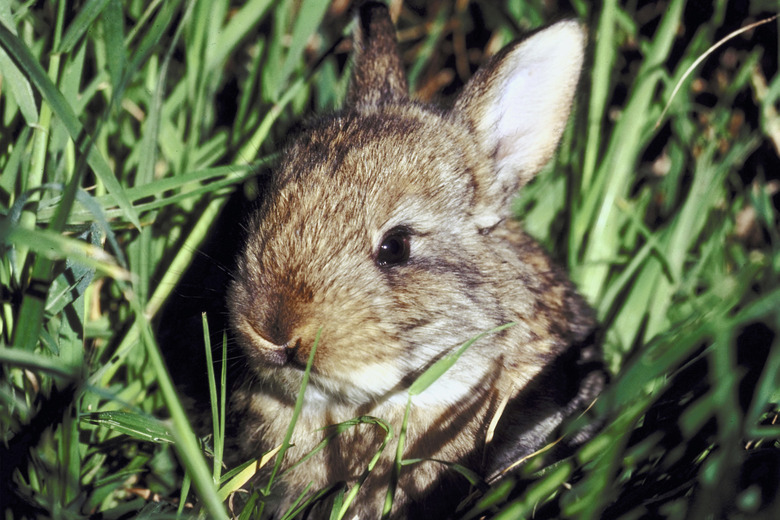How To Make A Diorama About Rabbits
Creating a rabbit diorama is an educational project for families with elementary age children. The most common type of rabbit found in the United States is the eastern cottontail rabbit. Most rabbits can live in a variety of habitats, such as forests, meadows, woods, grasslands, and even your backyard.
Step 1
Research the types of rabbits and the habitats in which they live. If possible, take a nature walk to collect leaves, petals, twigs, pebbles and dirt (or sand) to use in your rabbit diorama.
Step 2
Make a background in the shoebox that will represent the ground and sky. Construction paper is excellent for covering dioramas, but tempera paint is also a good choice.
Step 3
Add details to the diorama's background. Cotton balls make excellent fluffy clouds. Dirt or sand collected from your nature walk can be sprinkled on a thin layer of glue to add depth and interest.
Step 4
Cut construction paper to create trees, grass or streams of water. Gluing in small twigs or pebbles collected on your nature walk will add another layer of detail to the diorama.
Step 5
Draw or cut out pictures of rabbits to place inside the diorama or purchase miniature models from a craft or hobby store. When cutting out pictures of rabbits, cut an extra length of paper at the bottom of the rabbit. Bend the extra paper backwards, like a tab, so the rabbit stands when it's glued in place.
Things Needed
- Shoebox
- Scissors
- Construction paper or tempera paint
- Glue
- Cotton balls
- Leaves
- Petals
- Small twigs
- Pebbles
- Dirt or sand
- Pictures of rabbits
- Markers or crayons
TL;DR (Too Long; Didn't Read)
Do not limit your diorama to the items listed here. Use your imagination and select items that create interest or have unique textures.
Cite This Article
MLA
Young, Kendra. "How To Make A Diorama About Rabbits" sciencing.com, https://www.sciencing.com/make-diorama-rabbits-12068310/. 24 April 2017.
APA
Young, Kendra. (2017, April 24). How To Make A Diorama About Rabbits. sciencing.com. Retrieved from https://www.sciencing.com/make-diorama-rabbits-12068310/
Chicago
Young, Kendra. How To Make A Diorama About Rabbits last modified March 24, 2022. https://www.sciencing.com/make-diorama-rabbits-12068310/
